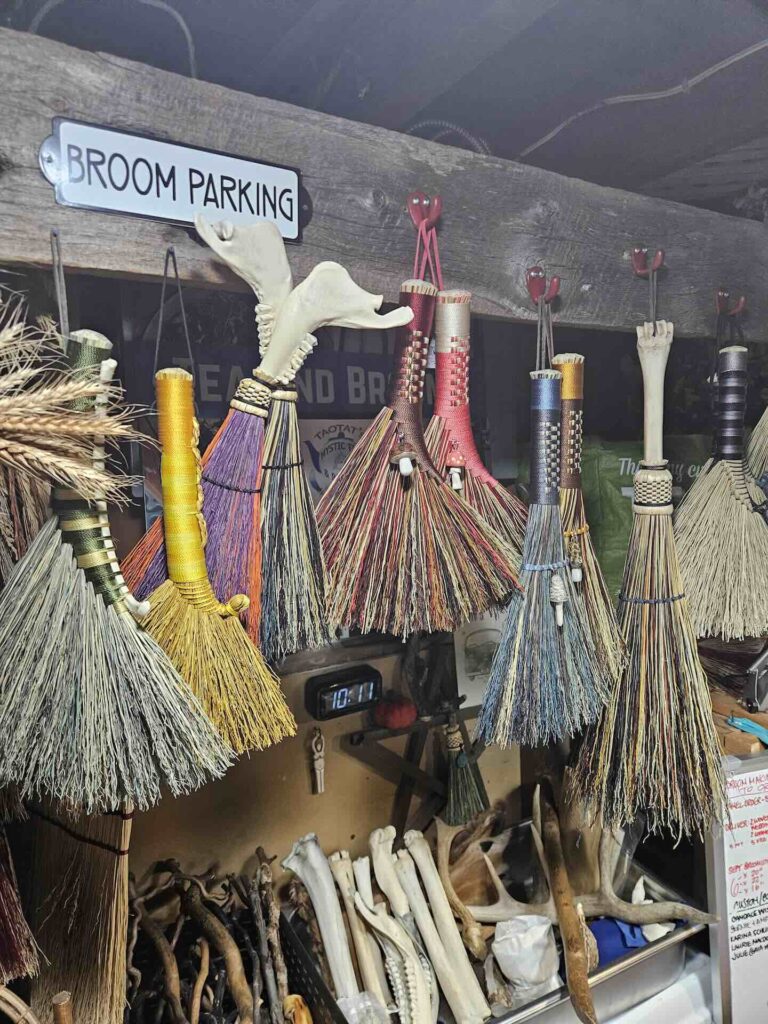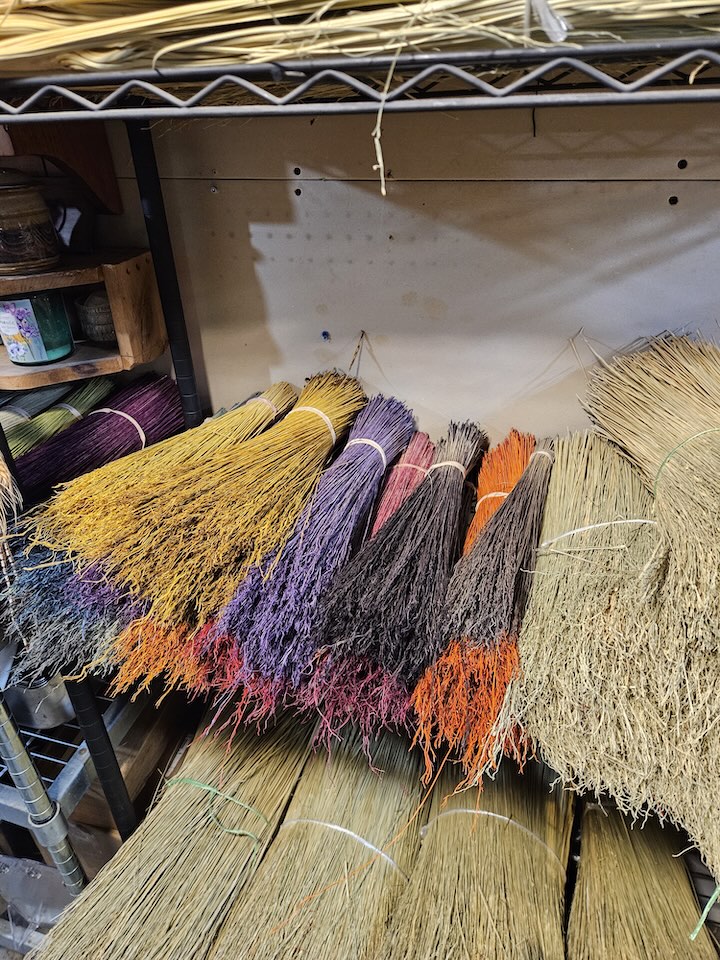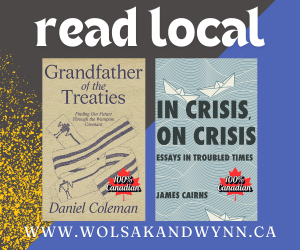Hamilton broom-maker is weaving an ancient craft
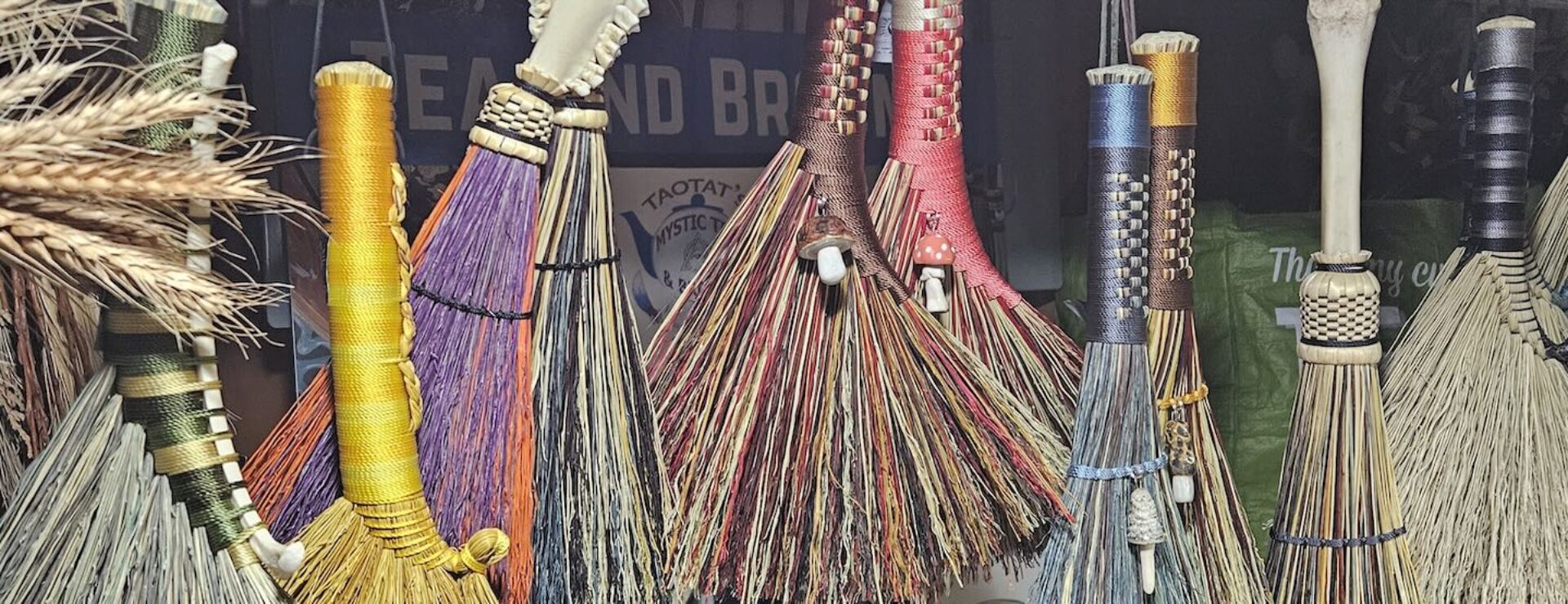
Amy Lou Taylor is one of only about a half-dozen of professional broom-makers in Ontario.
The first thing you notice when you walk into Amy Lou Taylor’s home is the peace and quiet. A hush falls over everything, except for the pot of chai tea bubbling merrily on the stove.
The next thing you notice is the brooms.
Big ones, small ones, all different colours with handles ranging from straight ash to curvy willow to deer bone, and everything in between. It all makes sense when you realize that Taylor is one of about a half dozen professional broom makers in Ontario.
While many people use brooms for decorations or as part of costumes during October, brooms have a long history of cultural uses, beyond just the practical act of sweeping up. Whether it’s the spiritual act of sweeping an altar during a pagan ceremony, or the very old tradition of jumping over a broom at a wedding that was brought over from Africa by enslaved people hundreds of years ago, brooms play an important role in a wide range of activities.
Taylor has always worked with her hands and created art from nature. “I’d be that person who went into the forest and created moss or leaf mosaics,” she says. “This is why I have things like willow bark and cordage materials all over my workshop.”
Taylor initially learned the craft from a demonstration of a broom winding tool she saw at Pagan Pride. After that, she made brooms on and off as part of a broader interest in natural crafts.
However, her early brooms were different from the ones she currently makes.
“The brooms that I had been making were just putting bundles of sticks together and wrapping it with a ribbon and putting a bunch of stuff on them. They were more house blessing brooms. I wanted to make something that was not only beautiful, but functional as well.”
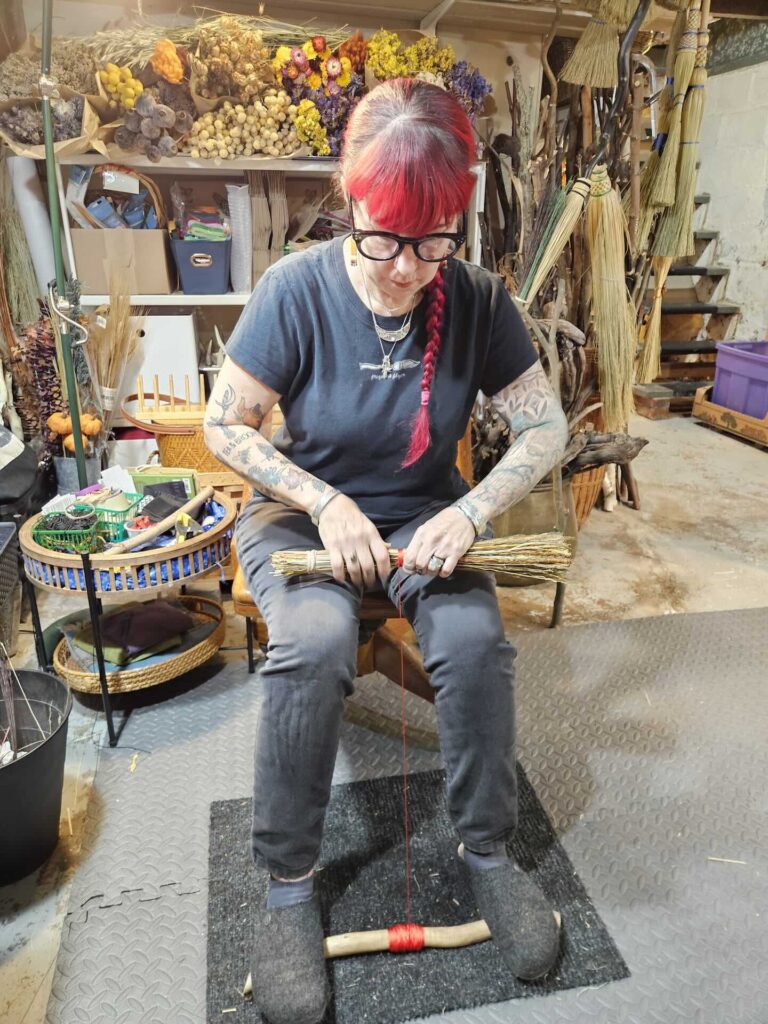
Taylor took a long break from crafting when her father passed away in 2012. Then, in the early days of the lockdowns, she found a 20-pound box of broom corn in her basement. She had largely forgotten the technique and turned to broom-maker Alyssa at Hearthcraft Brooms for a course on hawk’s tail and rooster tail brooms to brush up on her skills.
Reconnecting with her craft was a lifesaver. “I didn’t realize how badly I needed crafting until the pandemic, when I reconnected with broom-making,” she says.
“It’s the tactileness of it. It’s the physical-ness that I love about it. It’s hard work.”
Broom-making itself is deceptively simple.
“Essentially, the most basic things make a broom: you need a stick, you need twine, and you need something to use as a bristle.”
Broom materials can vary from besom brooms, made from bundles of sticks, to bundles of grass, or the broom corn material that Taylor uses. “It’s a meditative process, especially doing the weaving. It can be cathartic and very gratifying.”
Taylor says the way she has dived into her broom-making in the past five years has given her the ability to focus on something other than doomscrolling and obsessing with the horrors of the world. The process of weaving and wrapping brooms gives her a way to spend her time that is restorative instead of stressful and anxiety producing.
The past few years have also been a time of winnowing and focusing. She gave up her store front during the pandemic. The stress of trying to run a store during lockdown was simply too much. She has also stepped back from a 30-year career of doing tasseomancy — tea leaf reading — to focus on broom-making, tea-blending and simplifying her life.
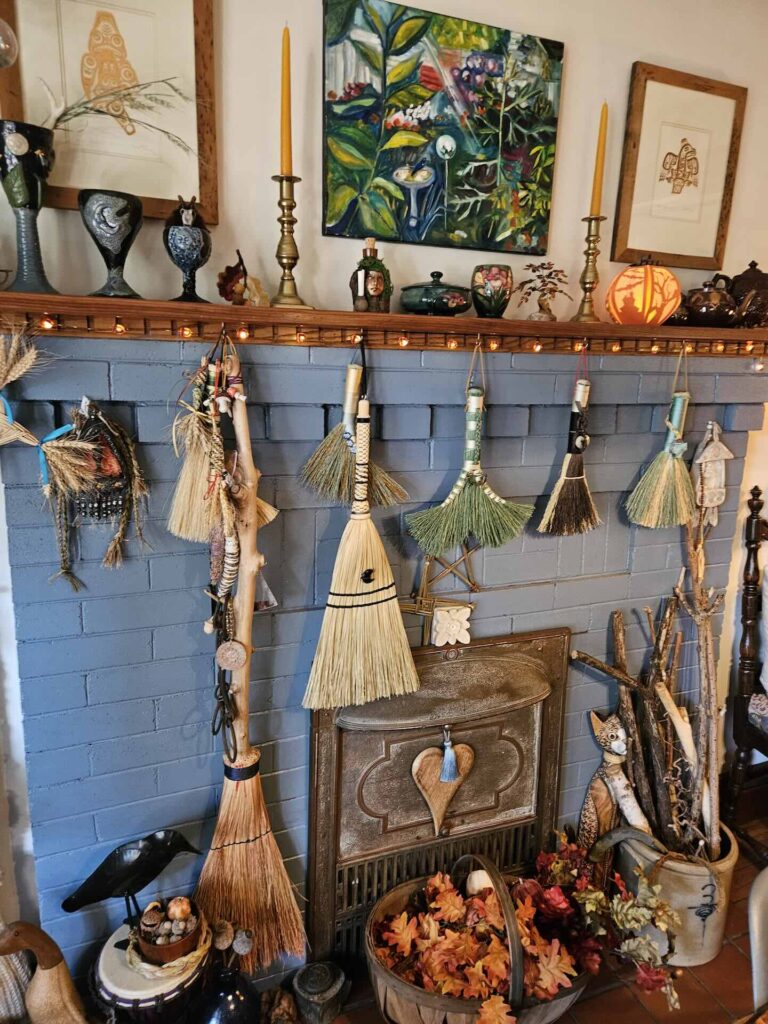
For now, she is mainly making brooms by request, with at least a three-week turnaround from order to delivery. Complex brooms, such as the double-headed wedding broom she recently completed for a friend’s hand-fasting ceremony, can take up to three months to complete.
Taylor acknowledges that the practice of broom-making is unusual, even if it does have deep roots in Ontario, and historically. “How many people crochet versus how many make brooms?”
The craft is so uncommon that it is difficult to source broom corn from Canada. Most of what she has used up until now was grown in Mexico but sold through companies in the United States.
Just this past summer, however, she has partnered with a farm in West Lincoln to grow her own Ontario-grown broom corn. She harvested it at the end of September and is looking forward to creating a more sustainable broom-making practice in Ontario and Canada.
Taylor is also working hard to spread the practice of broom-making more broadly, running workshops, classes and demonstrations regularly across southern Ontario. She also teaches private classes from her workshop in Hamilton’s east end.
Whether it’s sweeping your kitchen, sweeping off your porch or sweeping evil spirits off your hearth, Taylor knows how to make a broom for every occasion.
To learn more about Taylor's amazing brooms and workshops, go to TAOTAT.ca.
Jason Allen is the host of The Environmental Urbanist, Tuesdays at 1 p.m. on 93.3 CFMU, and has been encouraging Hamiltonians to explore the outdoors for almost two decades.








